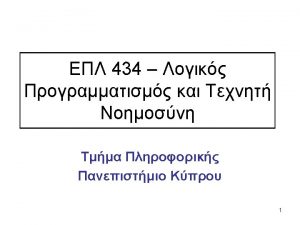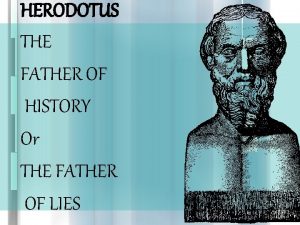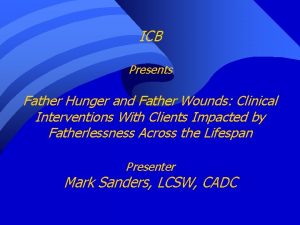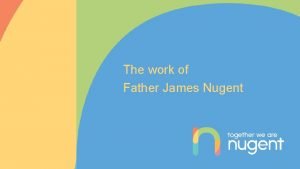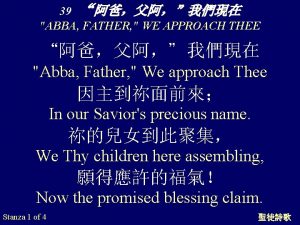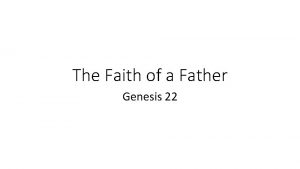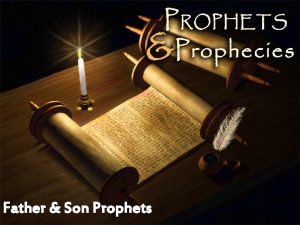In Memory of H C Siegmann the father
























- Slides: 24

In Memory of H. C. Siegmann the father of modern spin physics Joachim Stöhr SLAC

• • • Ph. D. in 1961, LMU Munich - last student of Walther Gerlach Full professor at ETH Zurich in 1974 33 years at ETH: supervised 120 Diploma and 62 Ph. D dissertations Robert Wichard Pohl Prize 1992 from the German Physical Society After retirement from ETH in 2000, guest Professor at SLAC Co-authored textbook on magnetism and helped supervise 15 Ph. D dissertations

Hans’ role in magnetism research a historical perspective

Magnetic structure of matter: atomic moments B. N. Brockhouse C. G. Shull Bulk atomic and magnetic structure e. g. Ni. O Prize came at the end of an era in magnetism… intensive work in 1950 - 60 by 1970 s much was known about bulk magnetic structure Modern magnetism is different the new era started in 1970 s…

The pioneers of modern spin physics 1969 - 76: H. C. Siegmann • Spin polarized photoemission - spin dependent electronic structure of matter • Invention of the Ga. As spin polarized source spin polarized electron beams 1986 - 88: P. Grünberg and A. Fert Discovery of the GMR effect Atomic engineering of novel materials These discoveries have moved the quantum mechanical concept of the electron spin from its scientific discovery in the 1920 s to a cornerstone of modern technology. They have triggered the spintronics revolution.

“for the discovery of giant magnetoresistance” A. Fert P. Grünberg nm Discovery combined two concepts: • atomic engineering of “sandwiches” with different magnetization directions • current becomes spin polarized and flows in two separate (“up” and “down”) spin channels with different resistivity – Mott’s “two current model”

Beams of spin polarized atoms Walther Gerlach

The Stern-Gerlach experiment 1921 - beginning of transient spins Postcard by Walther Gerlach to Niels Bohr, Feb. 8, 1922 m Note: neutral atoms (no charge) with spin +sz -sz QM wavefunction c =a cos q = a 2 – b 2 +b

1969 – a key breakthrough the discovery of spin-polarized photoemission or from spin polarized atoms to spin polarized electrons Importance: • electron spin polarization present in material is preserved when electrons are liberated with photons • spin polarized electrons can reveal spin structure of materials !

Discovery was prominently acknowledged Postcard from Walther Gerlach sent March 28, 1969 Letter from Sir Neville Mott sent March 268, 1971

Spin polarized photoemission has made important contributions Electronic structure of the oldest magnetic material: magnetite Fe 3 O 4 130 K metallic state • At room temperature, magnetite is a half metal • Conduction by minority spins only explains Mott’s model of Verwey transition

Spin polarized photoemission has revealed theoretical limitations electronic correlations can only be approximately described Ni(110) spin polarized bands • Observed exchange splitting smaller than calculated • Observed splitting depends on position in Brillouin zone • Observed bandwidth is narrower than calculated • Observed temperature dependence cannot be calculated

The beginning of spin-polarized electron beams - 1973 Garwin, Pierce, Siegmann, Helv. Phys. Acta, 47, 29 (1974) and The Ga. As spin-polarized gun

Spin polarized electron beams in high energy physics

Invitation to SLAC - 1973

Beginnings of The Standard Model - The Electroweak Force SLAC test of a theoretical prediction Unification of the electromagnetic and weak forces into one “electroweak” force Steven Weinberg Sheldon Glashow Abdus Salam • Proposed in the 1960 s by Weinberg, Glashow, and Salam • In 1967 Weinberg publishes “A Model of Leptons” which met all theoretical goals The model produces a major controversy: The proposed electroweak model violates parity

SLAC 1978: Test of Weinberg’s model If parity is violated, oppositely polarized electrons will scatter with different probabilities Ga. As Source Characteristics: • High intensity: up to 5 x 1011 electrons per pulse at 120 Hz • Good polarization: ~ 40% • Fast reversal of polarization The SLAC experiment produced the first observation of parity violation in a neutral current interaction! C. Y. Prescott et. al. , Physics Letters 77 B, 347 (1978); C. Y. Prescott et. al. , Physics Letters 84 B, 524 (1979); Physics Today 9, 17 (1978)


Spin polarized electron beams in magnetism

Spin dependent transport in materials 1936: Mott’s “two-currrent model” explains Gerlach’s resisitivity of Ni The current flows independently in two spin channels -- no spin flips ! Mott’s “two-currrent model” explains the GMR effect

An ingenious test of the “two current model” probability of spin-conserving and “spin-flip” transitions spin detector beam transport no suitable spin polarization detector Energy ballistic transport diffusive transport EV

Test of the two current model with spin polarized beams Siegmann, Meier, Erbudak, Landolt, Adv. El. and El. Phys. 62, 1 - 99 (1984) No spin flips are detected !


The end
 Symmetric shared memory architecture
Symmetric shared memory architecture Internal memory and external memory
Internal memory and external memory Virtual memory
Virtual memory Episodic memory
Episodic memory Primary memory and secondary memory
Primary memory and secondary memory Virtual memory in memory hierarchy consists of
Virtual memory in memory hierarchy consists of Implicit explicit memory
Implicit explicit memory Physical address vs logical address
Physical address vs logical address Eidetic memory vs iconic memory
Eidetic memory vs iconic memory Long term memory vs short term memory
Long term memory vs short term memory Which memory is the actual working memory?
Which memory is the actual working memory? Sự nuôi và dạy con của hươu
Sự nuôi và dạy con của hươu điện thế nghỉ
điện thế nghỉ Nguyên nhân của sự mỏi cơ sinh 8
Nguyên nhân của sự mỏi cơ sinh 8 Một số thể thơ truyền thống
Một số thể thơ truyền thống Trời xanh đây là của chúng ta thể thơ
Trời xanh đây là của chúng ta thể thơ Gấu đi như thế nào
Gấu đi như thế nào Thiếu nhi thế giới liên hoan
Thiếu nhi thế giới liên hoan Thế nào là số nguyên tố
Thế nào là số nguyên tố Tỉ lệ cơ thể trẻ em
Tỉ lệ cơ thể trẻ em Phối cảnh
Phối cảnh Các châu lục và đại dương trên thế giới
Các châu lục và đại dương trên thế giới Thế nào là hệ số cao nhất
Thế nào là hệ số cao nhất Hệ hô hấp
Hệ hô hấp Tư thế ngồi viết
Tư thế ngồi viết

























